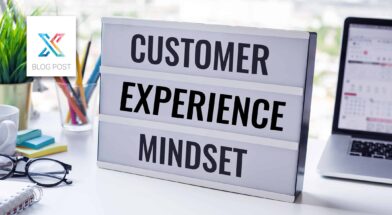Studies show that 87% of marketers believe they create engaging customer experiences. However, research also indicates the following:
- 53% of customers say that brands fail to meet their expectations
- 66% of customers can’t recall the last time a brand met or exceeded their expectations
In the realm of customer experience, there is often a disconnect between the experience business owners believe they are creating and what customers perceive their experience to be. While this disparity may initially appear as an unfortunate miscommunication, it also presents a significant opportunity for brands to effectively distinguish themselves by closing this gap.
You may be unsure whether improving your customer experience (CX) to meet their expectations is worth your time. This guide will help you understand why — and how — you should prioritize it in your business.
The Importance of Meeting Customer Expectations
So why is it important to meet customer expectations? Simply put, meeting customers' expectations about quality service is crucial for business success. You might be surprised to learn that up to 47% of your customers will walk away from your business after just one poor experience.
It’s clear that when you don’t meet expectations for customer service, your customers will be dissatisfied, negatively impacting your business.
However, while you should work toward meeting customer expectations for customer satisfaction, there are other reasons to improve CX. Research shows that:
- 84% of consumers say CX is just as important as a product lineup
- 62% of consumers tell others when they’ve had a bad experience with a brand
- 76% of customers are willing to shop with a competitor if their expectations aren’t met
- Brands lose $62 billion each year due to unmet customer service expectations
Customers make buying decisions based on whether their experience lives up to their expectations. Meeting expectations for a good CX is a revenue driver because it helps you build a positive brand image and gain a competitive edge.
It’s important to realize that the benefits of meeting customer expectations far outweigh any costs, as doing so can transform your business and position your brand for success.
Critical Strategies for Meeting Customer Expectations
Meeting customer expectations is vital to every business, but it isn’t easy. However, several proven strategies have helped business owners move toward giving their customers more of what they want (instead of what they think they want). Read on to discover three top strategies for meeting customer expectations and learn how you can implement them in your business.
Developing a Customer-Centric Culture
In most business models, the team that works closely with customers is usually held responsible for representing the brand positively and meeting all customer expectations. While customer-facing employees certainly play a massive role in creating customer experiences, there’s no way this task should be squarely on their shoulders.
Instead, customers must be top of mind for everyone at your company. For example, if your product development team continually ignores requests for certain features, it will impact whether that product can meet customer expectations. When everyone works together to improve CX, that effort shows up across every aspect of your organization.
Setting Clear and Realistic Customer Expectations
Your customers’ expectations for your brand are based on many things, including what you’ve communicated. If you’ve promised every customer around-the-clock service, don’t be surprised if someone who can’t reach a customer service agent after midnight is displeased with their experience.
For this reason, you must set realistic customer expectations at every stage of their journey with you. You can do this by:
- Adequately educating customers about what you do
- Continually sharing your mission and vision
- Clearly explaining business policies
- Maintaining transparency
Know what your customers want, and let them know what role you are prepared to play in delivering that.
Delivering Results and Ensuring Customer Satisfaction
Research shows you need 12 positive customer experiences to compensate for one negative experience. This statistic reveals the actual cost of inconsistency. Each time you over-promise, and under-deliver, your team has to work harder to make up for those unmet expectations.
Once you have done the work to set clear customer expectations, you must put everything you have into delivering results & meeting customer expectations. When you do this, it communicates to your customers that you care about their experience and that your brand is trustworthy enough for them to continue to spend their hard-earned money with you.
Meeting Customer Expectations Checklist: A Step-by-Step Approach
Is your brand struggling with how to meet your customers’ expectations? If so, it’s essential to know you’re not alone. Many businesses find it tough to deliver what their customers want.
Fortunately, you can learn the step-by-step approach that will lead you to success. If you’re wondering where to start improving your CX, let the next few sections guide you in developing an effective strategy.
Step 1: Understanding Customer Needs and Expectations
Are you aware that 91% of unhappy customers leave a brand without complaining to anyone about it? To create long-term relationships with your customers based on loyalty and trust, you must learn to regularly collect and analyze their feedback and apply it in every business area.
While you can certainly do this by reading social media comments or creating a product review section on your product pages, it’s also a good idea to use dedicated customer satisfaction surveys.
When appropriately crafted, these surveys can help you understand CX from their point of view and gain insight into specific actions you can take to improve it in ways that will indeed be meaningful to your customers.
Step 2: Aligning Internal Processes and Resources
Once you have gathered customer feedback and completed your analysis, you must figure out how to shift your internal processes so that every employee works toward the same CX improvement goals and metrics.
Here’s a meeting customer expectations example to help you understand what this means: if a CPA who runs an accounting and tax preparation firm has clients begging them to add business startup consulting to their list of service offerings, how might they do this? They may need to hire a business startup expert, have their sales manager develop a new script, and create new marketing materials for the service.
As you learn more about your customers’ needs and expectations, let that information guide you in determining your next move. Conducting business this way makes you much more likely to see significant results from your efforts.
Step 3: Training and Empowering Employees
Employee training is an essential step that has the power to make or break the entire process. This is because your employees, especially those in customer-facing positions, will have the most direct contact with your customers and therefore have significant potential to impact their experience positively.
Ensure your employees know what is expected of them when interacting with customers. They must understand the key performance metrics on which they will be evaluated and the outcomes expected from each customer interaction.
If your employees need additional resources to do their job well (such as real-time communication tools or documentation regarding new products and services), ensure they receive what they need to get the job done.
Step 4: Continuously Monitoring and Improving Customer Experience
Your implementation checklist isn’t finished after you implement changes based on feedback. Even after you’ve created new processes and trained your employees, you need to monitor and measure your team’s progress against the KPIs you set in Step 3.
Constant monitoring will help you and your employees accomplish three things. First, it will help you ensure your employees deliver on what you have asked them to do. It will also help you understand whether the changes you have made are improving the experience and meeting customer expectations for employees. Finally, consistent monitoring will help you notice any future changes in customer sentiment or expectations and address those changes immediately.
Exceeding Customer Expectations Means Getting in Tune with Their Needs
The only way your brand will be able to meet your customers’ expectations is if you take the time to understand what your customer truly wants. Although consumer research and statistics can provide you with a plethora of insight into overall trends, there’s no substitute for listening to your customers and making changes in your business model, product and service offerings, and operations to reflect their feedback.
While that may seem daunting, there are tools on the market to help you accomplish these goals. Client Savvy’s Client Feedback Tool gives businesses a practical way to gather information from their customers that will reveal their emotional needs, sentiment, and journey and help you connect with them on a deeper level.
As you learn to listen more effectively, you’ll improve your ability to meet customer expectations and earn their trust in your brand. Experience the power of Client Savvy firsthand by booking a demo today. Witness our solution in action and discover how we can assist you in uncovering your customers' genuine expectations, ultimately allowing you to surpass them and reap the numerous benefits that follow.





